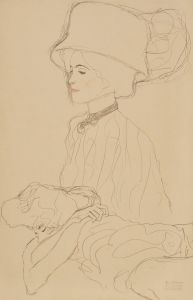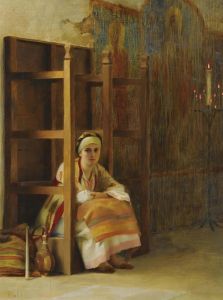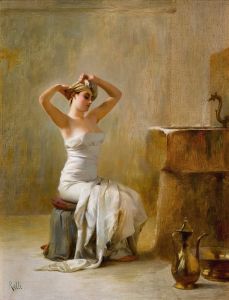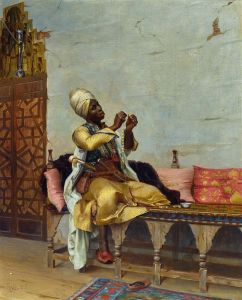
Odalisque
A hand-painted replica of Theodoros Ralli’s masterpiece Odalisque, meticulously crafted by professional artists to capture the true essence of the original. Each piece is created with museum-quality canvas and rare mineral pigments, carefully painted by experienced artists with delicate brushstrokes and rich, layered colors to perfectly recreate the texture of the original artwork. Unlike machine-printed reproductions, this hand-painted version brings the painting to life, infused with the artist’s emotions and skill in every stroke. Whether for personal collection or home decoration, it instantly elevates the artistic atmosphere of any space.
Theodoros Ralli was a Greek painter known for his works that often depicted orientalist themes, a popular genre in the 19th century that portrayed the Middle East and North Africa through a Western lens. One of his notable works is "Odalisque," which exemplifies his interest in capturing the exotic and romanticized aspects of Eastern life as perceived by Western audiences.
Ralli was born in Constantinople (modern-day Istanbul) in 1852 and later moved to Paris, where he studied under the renowned French painter Jean-Léon Gérôme. Gérôme was a leading figure in the Orientalist movement, and his influence is evident in Ralli's work. Ralli's paintings often featured meticulous attention to detail and vibrant colors, characteristics that are also present in "Odalisque."
The term "odalisque" refers to a female slave or concubine in a harem, particularly within the Ottoman Empire. This subject was a popular motif among Orientalist artists, who were fascinated by the idea of the harem as a secluded and mysterious world. In "Odalisque," Ralli captures this intrigue by portraying a woman in a setting that suggests luxury and sensuality. The painting reflects the Western fascination with Eastern cultures during the 19th century, a time when European powers were expanding their influence in the region.
Ralli's "Odalisque" is characterized by its rich use of color and intricate details, which are hallmarks of his style. The painting likely features a reclining female figure, adorned in elaborate garments and surrounded by opulent furnishings. Such compositions were intended to evoke a sense of exoticism and allure, appealing to the Western imagination of the East as a place of mystery and decadence.
Throughout his career, Ralli exhibited his works in prestigious venues, including the Paris Salon, where he gained recognition for his skillful depictions of Eastern subjects. His paintings were well-received by audiences who were captivated by the romanticized vision of the Orient that he and other Orientalist artists presented.
While "Odalisque" is a testament to Ralli's technical prowess and artistic vision, it is also a product of its time, reflecting the complex dynamics of cultural representation and the Western gaze on Eastern societies. The painting, like many Orientalist works, can be seen as both an artistic achievement and a historical artifact that offers insight into 19th-century attitudes towards the East.
Ralli continued to paint and exhibit his works until his death in 1909. His legacy is preserved in various collections, and his paintings remain subjects of study for those interested in Orientalism and 19th-century art. "Odalisque" stands as a significant example of his contribution to the genre, showcasing his ability to blend technical skill with the thematic elements that defined Orientalist art.





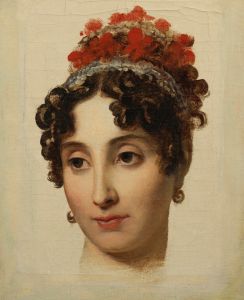
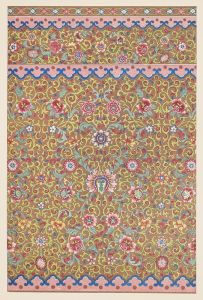

![Interior of the mosque of the Metwalys [Metwalis].](/imgs/217497/s/david-roberts-interior-of-the-mosque-of-the-metwalys-metwalis-d41ed7bd.jpg)
